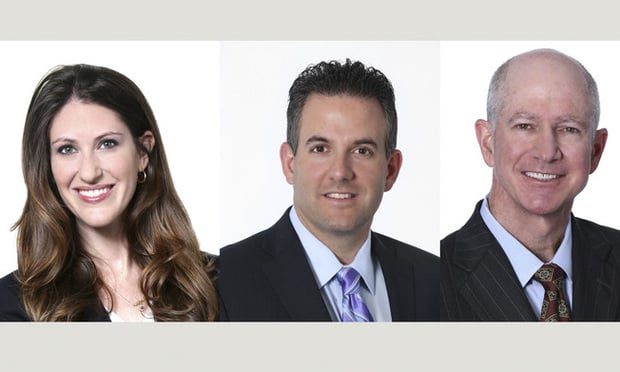 (l-r) Bilzin Sumberg partners Alexandra Lehson, Jay Sakalo and Jon Chassen in Miami. Courtesy photos
(l-r) Bilzin Sumberg partners Alexandra Lehson, Jay Sakalo and Jon Chassen in Miami. Courtesy photos
An opportunity zone project in Miami’s Overtown neighborhood made a $73.5 million leap forward with help from a trio of Bilzin Sumberg attorneys.
Partners Alexandra Lehson, Jay Sakalo and Jon Chassen in Miami secured the financing July 31 for the Soleste Grand Central apartment tower.
Recommended For You
Want to continue reading?
Become a Free ALM Digital Reader.
Once you are an ALM Digital Member, you’ll receive:
- Breaking commercial real estate news and analysis, on-site and via our newsletters and custom alerts
- Educational webcasts, white papers, and ebooks from industry thought leaders
- Critical coverage of the property casualty insurance and financial advisory markets on our other ALM sites, PropertyCasualty360 and ThinkAdvisor
Already have an account? Sign In Now
*May exclude premium content© 2025 ALM Global, LLC, All Rights Reserved. Request academic re-use from www.copyright.com. All other uses, submit a request to [email protected]. For more information visit Asset & Logo Licensing.








